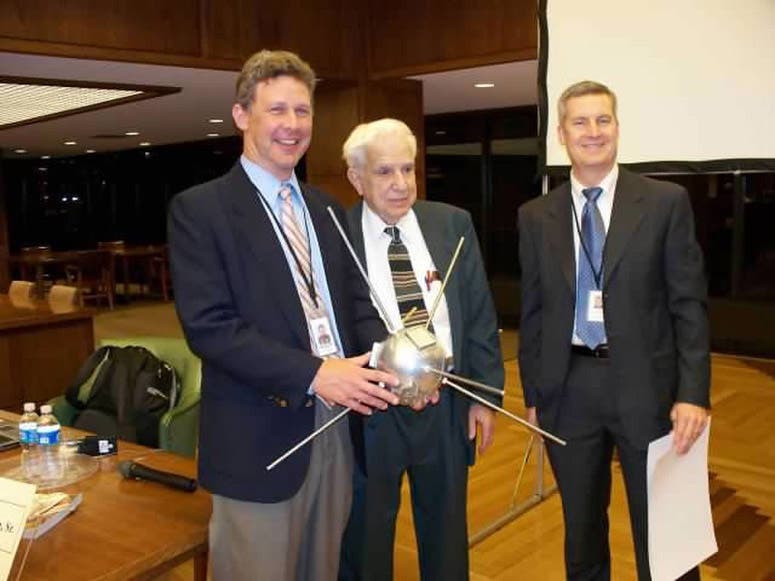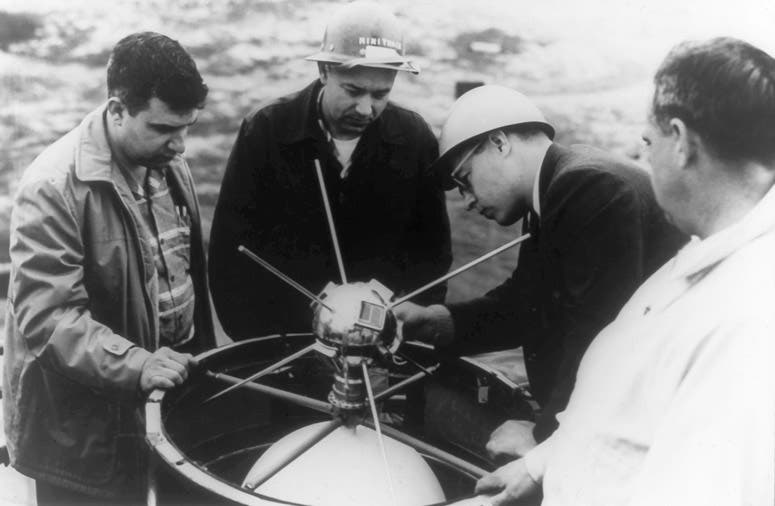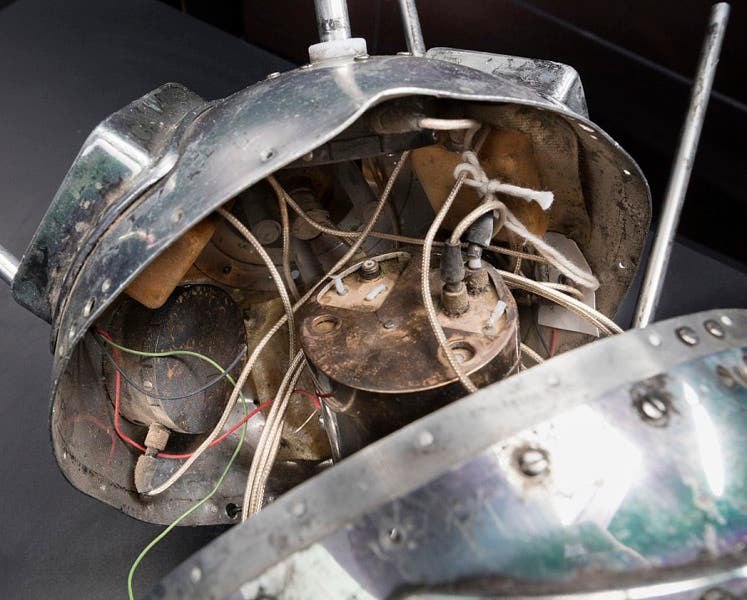Scientist of the Day - Vanguard TV-3
Vanguard TV-3, the first American attempt to put a satellite in orbit, was launched Dec. 6, 1957. Sputnik 1 had gone into orbit on Oct. 4, 1957, and while the public was impressed, even awestruck, the budding space industry in the United States went into panic mode. There were several rocket programs in progress in the U.S. with satellite capability, but the first launch had been planned for the spring of 1958, and clearly the programs needed to be speeded up drastically. The U.S. Naval Research Laboratory was in charge of the Vanguard program, and upon the success of Sputnik I, it was decided to attempt to put a small beeping aluminum sphere into orbit using the new Vanguard rocket. The sphere they fabricated was 6.5" in diameter and weighed a little over 3 pounds (Sputnik 1 weighed 180 pounds), as you can see in the photo of one being installed on top of a Vanguard (third image). But the launch did not go as planned. The rocket went up about four feet, settled back down on the launch pad, and exploded, destroying itself and nearly wrecking the launch pad. The launch failure was recorded on film; here is a short newsreel clip. No one was aware at the time that the satellite booster mechanism had fired and the satellite had shot out onto the tarmac, where they found it the next day, beeping away as if it were 100 miles up in a proper orbit.
The failure of Vanguard TV-3 was humiliating (it would have been renamed Vanguard 1 had it been successful). The Soviets had already launched Sputnik 2 in November, and Vanguard was our attempted initial entry into the space race, and it was a complete bust. The satellite acquired many unkind nicknames, of which the cleverest was perhaps "Kaputnik." But the failure might have been a good thing in the long run. After all, we did get better. Vanguard 1 (the first successful Vanguard launch) flew on Mar. 17, 1958, and there were two more 3 successful Vanguard flights (out of 11 attempts, so the batting averages started out rather low). But by the time of the Apollo program, the average rose to 100%, so clearly lessons were learned.
Once it was determined that Vanguard TV-3 was not the ruin of the U.S. space program, but just an unfortunate bad day in an otherwise good 12 years, the battered little satellite (designated Vanguard 1A) was placed on public display in the Smithsonian, as an indicator, I suppose, that the United States does not need to cover up its failures. It was subsequently transferred to the National Air and Space Museum, where it was on view for many years, although it has now been moved to storage, I believe (first and fourth images).
In the photograph of the satellite being installed on top of the Vanguard rocket (third image; it is not clear whether this was Vanguard 1 or 1A), the individual at the left is Roger Easton, Sr., who wrote the successful Vanguard proposal for the Naval Research Laboratory, and later was a co-inventor of the Global Positioning System (GPS). Mr. Easton gave a talk at the Linda Hall Library for the opening of our exhibition, “The Year the Space Age Began”, in September 2007, and he brought a full-scale replica of Vanguard 1A with him, which you can see in a photo taken on the occasion (fifth image, below). Roger Easton is in the center, while our own Eric Ward holds the replica.

Roger Easton, Sr., center, with Eric Ward, Vice President of Programs, Linda Hall Library, at left, holding a full-scale replica of the satellite aboard Vanguard TV-3, photograph, 2007 (Linda Hall Library)
William B. Ashworth, Jr., Consultant for the History of Science, Linda Hall Library and Associate Professor emeritus, Department of History, University of Missouri-Kansas City. Comments or corrections are welcome; please direct to ashworthw@umkc.edu.










